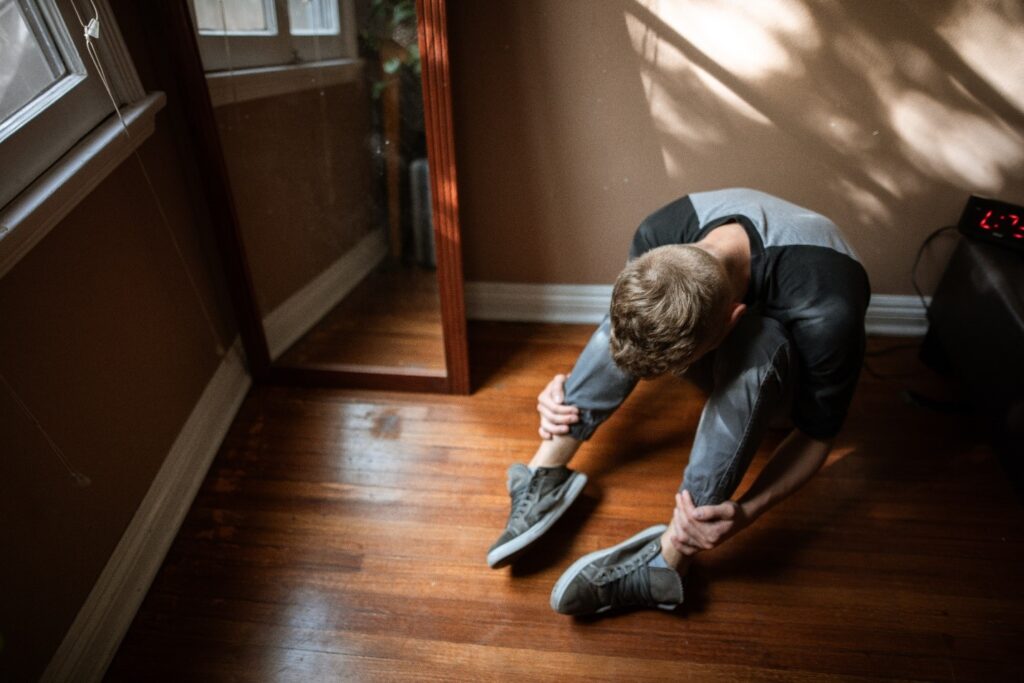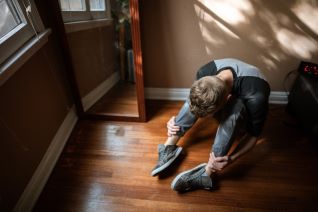
When we think about trauma, we immediately associate trauma with war, massive shootings, and natural disasters; we don’t hear much about trauma and its impact on the LGBTQ+ community. Living every day as your true self can involve bullying, ostracization, harassment, violence, hate crimes, and other painful experiences.
According to the Diagnostic and Statistical Manual of Mental Disorders, fifth edition, commonly known as DSM-5, trauma is defined as an act or threat that involves intense psychological harm, sexual violence, serious injury, or death. The manual further explains PTSD as direct or indirect exposure to trauma and the development of trauma symptoms.
Trauma and Development of PTSD
The symptoms of trauma that define PTSD include:
Re-experiencing Symptoms – These symptoms are linked to thoughts and memories regarding the traumatic event. These can include recurring and intrusive memories of the traumatic event. These thoughts and memories can be involuntary and upsetting. Intrusive symptoms include repeated disturbing dreams about the event, dissociation, persistent distress, and strong bodily reactions when reminded of the event.
Avoidance – Symptoms of avoidance occur as those struggling with PTSD isolate themselves from people, places, activities, and objects that remind them of the traumatic event. People with PTSD may also avoid conversations, feelings, thoughts, and physical sensations related to the event.
Negative Condition, Thoughts, and Mood – People with PTSD can experience a constant negative emotional state. Feelings of fear, anger, shame, and guilt can be a part of this negative state. They may also experience self-blame, loss of interest in hobbies, and detachment from others. Chronic reaction to trauma may even cause weakened memory, a persistent negative outlook on others and life, and a person’s inability to enjoy positive experiences.
Changes in Reactivity – The constant fear and shame can change how people with PTSD respond to day-to-day situations. On one hand, they may face slowed reactions such as difficulty concentrating on things or understanding things right away and sleeping issues. On the other hand, they may experience heightened senses with feelings of irritability, frustration, and aggression. Impulsive or self-harming behavior may accompany these feelings.
Trauma and PTSD Among the LGBTQ+ Community
Studies suggest a higher percentage of trauma and PTSD symptoms among the LGBTQ+ community members. In the LGBTQ+ community, at least 1.3% and up to 47.6% of the LGB segment suffer from PTSD. Moreover, transgender individuals who suffer from PTSD make up 17.8 to 42 percent of the community.
The exact percentage of any particular LGBTQ+ community member suffering from trauma and PTSD symptoms depends on a number of demographic factors of where the community members reside. Another study suggests that the percentage of cisgender lesbians and bisexual women exposed to trauma was almost double to that of cisgender gay and bisexual men.
LGBTQ+ Community and the High Risks of Trauma and PTSD
About 75%, or three out of every four, members of the LGBTQ+ community experience at least one form of abuse or harassment. The abuse or harassment may include emotional and sexual abuse from strangers, verbal abuse by those at home or from strangers, bullying in school or the workplace, and psychological or emotional abuse at home.
The reasons behind the abuse and harassment are the unacceptance of LGBTQ+ members in society and the hate crimes toward them. About 47% of LGBTQ+ community members face emotional abuse, 46% face bullying in school, 26% suffer from physical abuse, 22% experienced sexual abuse, and 15% become a victim of hate crime at least once in their life.
However, these stats don’t convey that most LGBTQ+ community members face abuse and harassment early in life and continue to experience it throughout their lives. The continuous trauma builds up throughout their life and becomes complex trauma.
Complex Trauma and its Presence in the LGBTQ+ Community
Complex trauma is defined as the occurrence of multiple traumatic events of interpersonal nature beginning in early childhood. Though beginning in childhood, the traumatic events can occur until the later stages of life. These traumatic events can be intentionally or intentionally caused by a parent or caregiver and can be followed by periods of profound neglect. Complex trauma can look like early-life stress or adverse childhood reaction with a single-episode of trauma, multiple episodes of trauma experienced in different life stages, or single-episode trauma with secondary PTSD.
Many symptoms of complex trauma are similar to that of PTSD. However, further symptoms can include physical sickness such as chest pains, stomach aches, dizziness, headaches, etc. Symptoms can also include difficulty controlling emotions, difficulty forming or maintaining relationships, cutting off close relationships, and suicidal thoughts.
Since LGBTQ+ community members often experience trauma throughout the different life stages, it isn’t uncommon for them to suffer from complex trauma. One study found that up to 91% of transgender individuals experience multiple traumatic events during their lifetime. The same study also suggests the increased risk of developing PTSD and complex trauma among sexual minorities due to social prejudice, high risk of sexual and physical violence, and pre-existing anxiety and affective disorders.
Evidence-Based Treatments for Complex Trauma
The two evidence-based treatments that can help treat complex trauma include:
Exposure Prevention Response Therapy or EPRT
ERPT is delivered to desensitize fear in the patient. Desensitizing fear allows the patients to tolerate trauma triggers and replace them with helpful coping skills and strategies.
During the ERPT, patients are guided to devise a fear ladder or hierarchy of fears. The therapist begins with the least feared situation and designs safe and careful exposure activities for the patient. These pre-planned activities allow the therapist to guide the patient to develop coping skills.
The coping skills mostly consist of grounding techniques such as breathing work and self-calming techniques that help the patient’s body and brain modulate the fear response. As the patient begins mastering the coping skills, the therapist moves up the fear ladder in further sessions to allow the patient to become capable of dealing with all kinds of fearful situations.
Trauma-informed CBT
Trauma-informed CBT helps patients flesh out trauma narratives and belief systems surrounding the trauma event. The goals of trauma-informed CBT are:
● Addressing Safety Issues – Safety plays a key role in treating any patient. The therapist addresses self-harming or maladaptive physical behaviors with the patient to ensure and prioritize their safety.
● Deconstructing Self-Depreciating Beliefs – Therapist addresses self-harming and self-depreciating thoughts by the patient. This goal can be hard to achieve and time-consuming, requiring patients to change their beliefs and weed out any cognitive distortions related to the traumatic event.
● Stress Management – Everyday ordinary stress can feel amplified and debilitating to trauma survivors. The therapist teaches patients techniques that help lower and manage everyday stress to their best ability to achieve this goal.
● Building or Restoring a Support System – Therapist helps patients restore their support system or build a new one. They also connect patients to resources that can prove helpful.
● Emotion Regulation – Mindfulness practices such as meditation, breathing exercises, and the development of proactive behaviors are used to achieve this goal.
● Future plans – Patients are encouraged to create positive goals and memories for themselves. They are also encouraged to believe that living the life they aspire is achievable.
● Creating a New Narrative and Overcoming Trauma – This step involves creating a new narrative which allows the survivor to see them self as a victor who managed to emerge whole on the other side. This goal leads to a sense of completion, a dying of oneself to be reborn to a new story and new chapter in one’s life. Overcoming trauma is a long-life commitment and devotion to self that requires attention to one’s internal and external resources, strengths, and capabilities.
Looking at things positively can allow patients to hand over trauma to divine power, make the decision to leave an abusive relationship or environment, and free themselves of the burden of trauma. Internal resources, also known as intrinsic and natural abilities, can especially help the patients feel safe. They allow patients to see a bigger picture and believe in a bigger purpose, a higher meaning, positive personal attributes and traits, and a spiritual capacity to forgive and let go. External resources define the environment of a patient. They include positive and protective factors such as support from friends, family, and therapy groups, volunteering, and joining a book or art club that helps them heal.
Utilizing both internal and external resources can greatly help patients achieve the goals of trauma-informed CBT
Final Thoughts
If you or someone you know from the LGTBQ+ community is facing complex trauma or PTSD symptoms, there are many paths you can take to improve your mental health. The Trevor Project is one such platform where LGBT and queer youths and young adults can receive help from professionals for free. If you have the means, getting in touch with an expert therapist can help you recover from the mental toll that LGTBQ+ can face.
Angelina Valentin
Angelina offers counselling services and has worked with clients from all sorts of backgrounds. Angelina runs the Q Therapy Podcast and offers free mental health awareness and education on LGBTQ+ related matters.
